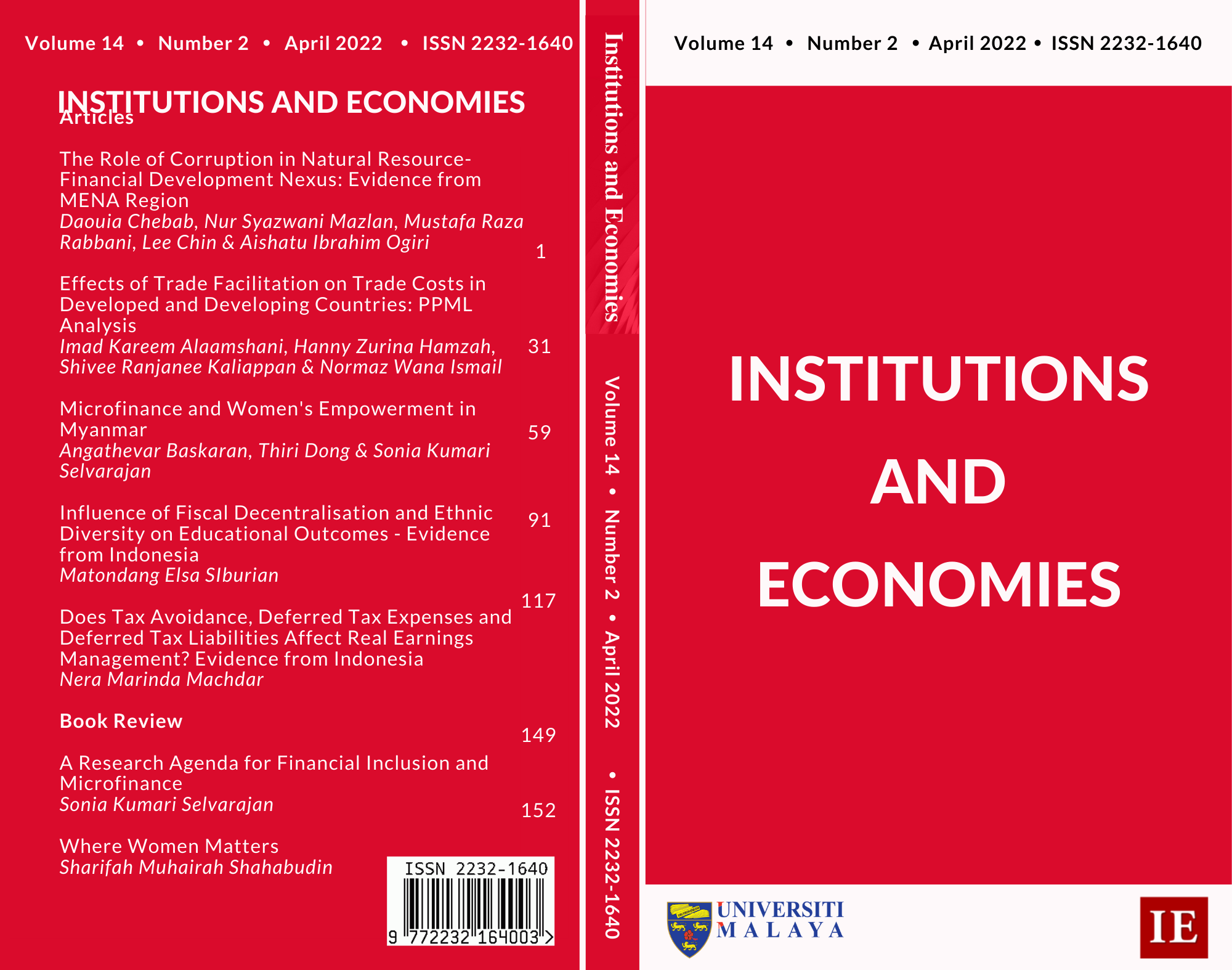The Role of Corruption in Natural Resource-Financial Development Nexus: Evidence from MENA Region
Main Article Content
Abstract
This paper contributes to the literature on resource curse by investigating the impact of natural resource abundance on financial development while accounting for the interactive effect of natural resources and corruption in 11 resource-rich MENA countries over the period of 1987 to 2015. Using pooled mean group (PMG) estimation technique, our results show that abundance of natural resource weakens the pace of financial development in countries with high level of corruption. Thus, resource rich countries in the MENA region will boost the level of financial development through minimising the degree of corruption in their financial sectors. Therefore, policymakers should control the corruption, which plays a significant role to mitigate the adverse effect of natural resources on financial development. This is through building strong institutions, which help to check corruption, enhancing rule of law and protecting investors. Our results are consistent and robust to alternative measures of natural resource abundance and financial development.
Downloads
Article Details
Submission of a manuscript implies: that the work described is original, has not been published before (except in the form of an abstract or as part of a published lecture, review, or thesis); that is not under consideration for publication elsewhere; that its publication has been approved by all co-authors, if any, as well as tacitly or explicitly by the responsible authorities at the institution where the work was carried out. Transfer of copyright to the University of Malaya becomes effective if and when the article is accepted for publication. The copyright covers the exclusive right to reproduce and distribute the article, including reprints, translations, photographic reproductions, microform, electronic form (offline and online) or other reproductions of similar nature.
An author may self-archive the English language version of his/her article on his/her own website and his/her institutions repository; however he/she may not use the publishers PDF version which is posted on www.ijie.um.edu.my. Furthermore, the author may only post his/her version, provided acknowledgement is given to the original source of publication and a link must be accompanied by the following text: The original publication is available at www.ijie.um.edu.my.
All articles published in this journal are protected by copyright, which covers the exclusive rights to reproduce and redistribute the article (e.g. as offprint), as well as all translation rights. No material published in this journal may be reproduced photographically or stored on microfilm, in electronic database, video disks, etc., without first obtaining written permission from the publishers. The use of general descriptive names, trade names, trademarks, etc., in this publication, even if not specifically identified, does not imply that these names are not protected by the relevant laws and regulations.
The copyright owners consent does not include copying for general distribution, promotion, new works, or resale. In these cases, specific written permission must first be obtained from the publishers.

